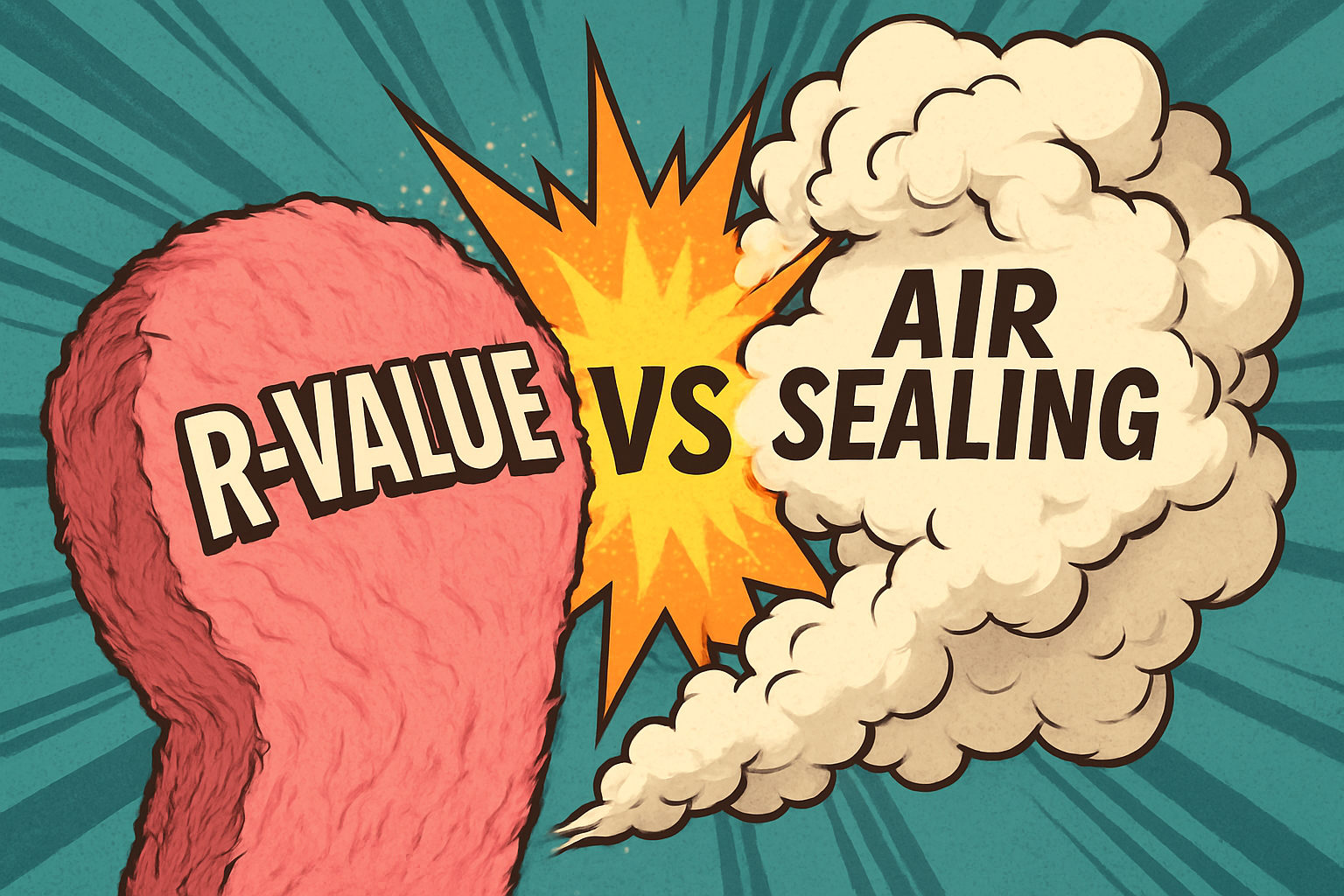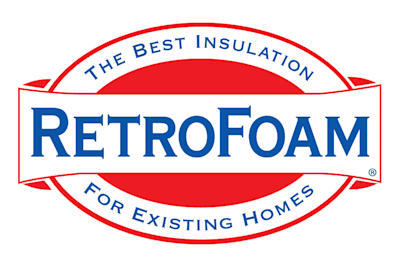R-Value vs. Air Sealing: What Homeowners Need to Know About Insulation
spray foam insulation | RetroFoam insulation | energy efficiency | foam university


When you start researching insulation, one of the first things you’ll see is R-Value, usually with a number attached to it.
But here’s the thing, R-Value doesn’t tell the whole story when it comes to your home’s comfort and efficiency.
That’s where air sealing insulation comes into play. Let’s break down what R-Value actually means, what air sealing your home does, and why you need both for the best results.
What is R-Value?
At its core, R-Value is a measure of how well insulation resists heat transfer through conduction – in other words, heat loss or gain through direct contact.
- High R-Value = better resistance to conduction.
- Common insulation materials like fiberglass and cellulose often boast high R-Values.
But here’s the catch: these materials still allow for air movement, also known as convection. Convection is heat loss through moving air, like drafts sneaking through your walls or attic.
And when insulation shifts or settles over time, those gaps can reduce the actual R-Value of insulation in your home, leaving certain areas unprotected.
Why Air Leakage is a Problem
Did you know that roughly 30 percent of your energy bill is paying for air leaks?
That means even if you have insulation with a strong R-Value, your money (and your comfort) could be slipping right out of those gaps.
The result?
- Drafts and uncomfortable rooms.
- Higher utility bills.
- A home that never feels consistently comfortable.
What is Air Sealing Your Home?
So, what does it mean to air seal a home?
Simply put, it’s the process of closing off the small cracks, gaps, and leaks where air enters and escapes.
Certain insulation materials, like spray foam and injection foam, act as both an insulator and an air seal. When installed, foam insulation completely fills the cavities, blocking outside air from getting in and keeping conditioned indoor air where it belongs.
This is something fiberglass and cellulose just can’t do.
Air Sealing and Insulation: A Winning Combination
Even though foam insulation often has a lower R-Value compared to fiberglass or cellulose, its ability to create an air seal makes up for that difference many times over.
Benefits of Air Sealing Insulation
- Energy efficiency: Less air loss means lower monthly energy bills.
- Comfort: Eliminate drafts and keep rooms consistently cozy no matter the weather.
- Durability: Prevents shifting and settling that reduce insulation effectiveness over time.
When combined, insulation and air sealing work together to improve your home’s efficiency and comfort more effectively than relying on R-Value alone.
Why Homeowners Should Care About Air Sealing
If you’re already searching for insulation options, chances are your home isn’t as comfortable or efficient as it could be.
Maybe you’re dealing with:
- Drafty rooms.
- High heating and cooling bills.
- Hot summers and cold winters inside your home.
Focusing only on R-Value won’t solve these issues, but choosing an insulation that also air seals your home will.
If you want to dive deeper into insulation and efficiency, head over to our Learning Center, where you’ll find more articles, videos, and resources to help you make the best decision for your home.
Key Points:
- R-Value measures resistance to heat transfer through conduction, but it doesn’t account for air movement.
- Air leakage can cost homeowners up to 30 percent of their energy bills.
- Air sealing insulation, like spray foam and injection foam, blocks air movement, creating consistent comfort and efficiency.
- Fiberglass and cellulose may have higher R-Values, but they can’t stop drafts.
- The best approach is to combine insulation and air sealing for maximum results.
Related Articles
What is Air Sealing Your Home with RetroFoam Insulation?
Understanding R-Value and U-Value: The Key to Efficient Insulation
What Homeowners Often Misunderstand About Insulation R-Value
FAQs About R-Value and Air Sealing
What is R-Value in insulation?
R-Value measures how well insulation resists heat transfer through conduction (direct contact).
Higher R-Values mean better resistance, but R-Value doesn’t measure air leakage.
What is air sealing a home?
Air sealing is the process of closing off gaps and cracks where air escapes or enters your home.
Foam insulation creates a built-in air seal, unlike fiberglass or cellulose.
Why is air sealing important if I already have insulation?
Even high R-Value insulation can’t stop drafts.
Air sealing prevents conditioned air from escaping and outside air from entering, saving you money and improving comfort.
What is the difference between insulation and air sealing?
Insulation slows heat transfer. Air sealing prevents air leaks.
Together, they maximize efficiency and comfort.
Does air sealing lower energy bills?
Yes, up to 30 percent of energy use in homes is wasted through air leaks.
Air sealing reduces that waste.
About Amanda Emery
Amanda previously has worked as a breaking news and crime reporter, TV news producer, and editor. As a journalist, she has won several awards from The Society of Professional Journalists - Detroit Chapter and the Michigan Press Association. Amanda uses her experience as a journalist to write content that will help educate homeowners on foam insulation benefits. When Amanda isn’t writing, she’s spending time with her husband Chris, daughter Lilith-Maeve, and rescued huskies Danger and Wendigo. She also loves knitting, making art, and cooking.



